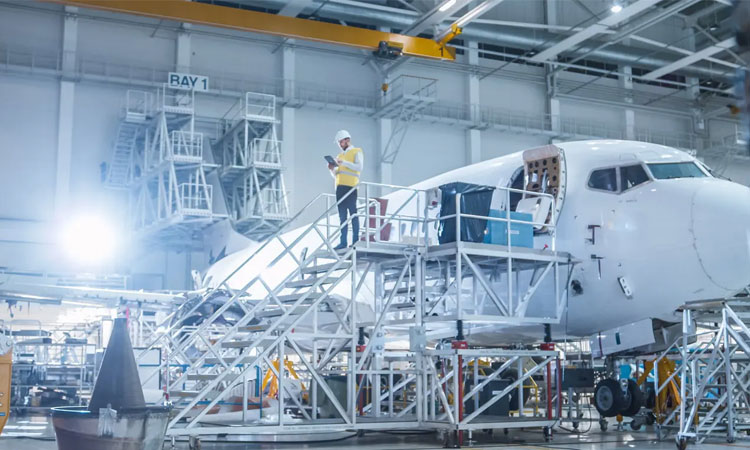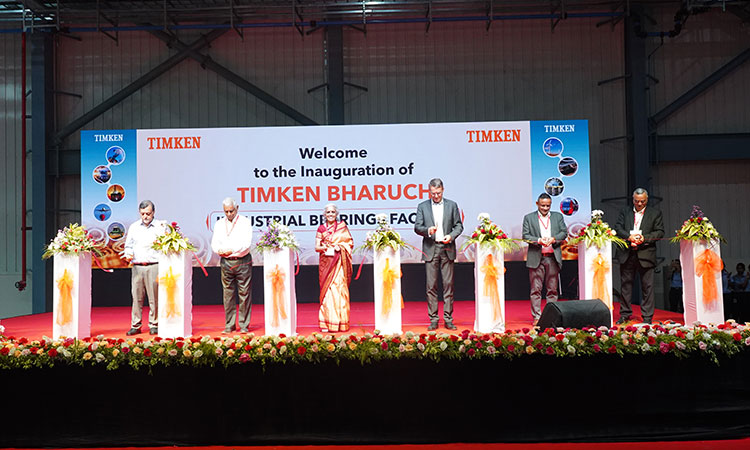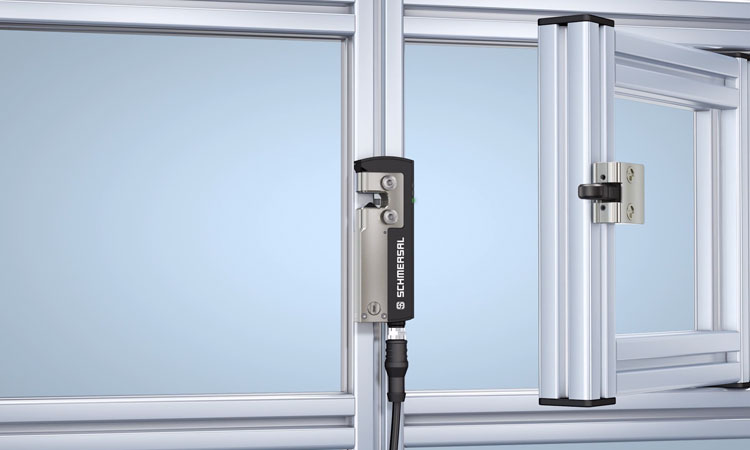BHARUCH, Gujarat,April9, 2025—Timken India Limited, a leader in engineered bearings and industrial motion products, today…

How to Overcome Aerospace Manufacturing Challenges | ENGINEERING REVIEW |Manufacturing | Industrial Sector Magazine & Portal
Humanity is in the midst of a new space race, the first one since the US and Russia went head to head to put the world’s first astronaut into orbit in the early 1960s. Despite or perhaps because of all the human race’s challenges, everyone is focused on taking humanity to the stars. The aerospace industry is already worth $899.5 billion in 2022, with experts estimating exponential growth into the trillions by 2030. What are the most common challenges facing the aerospace manufacturing industry, and how can companies overcome them?
Pandemic Fallout
The COVID-19 pandemic had monumental impacts on nearly every industry. Lockdowns and fear of catching the virus slowed air travel and brought production to a grinding halt. It’s not over yet, with new variants emerging. Airlines are struggling, looking to reduce or restructure their fleet and deliveries of new equipment are dropping.
Adopting smart technologies is one way companies can work to overcome these challenges. Smart factories can help increase efficiency and productivity in the manufacturing sectors, making it easier for companies to keep up with demand when other variables, such as a global pandemic, may be out of their control.
Skill Gaps
For an industry that is often on the cutting edge of new technologies, its practices can remain painfully hidebound. Outdated techniques follow an aging workforce, many of whom have been in the industry for decades and are fast approaching retirement. Add that to the fact that many of the engineers laid off during the COVID-19 pandemic have moved on to bigger and brighter things and keeping up with the demand necessary to restore the industry to pre-COVID levels will be challenging at best. Industry experts estimate that it could take up to five years to recover.
The easiest way to overcome this challenge is to start seeking out new skilled workers for these positions now before their lack puts undue pressure on the industry, making a recovery take even longer. Offering competitive salaries and benefits can help to entice new minds into the industry to help fill in these skill gaps.
Cybersecurity
Cybersecurity is one of the biggest concerns for the aerospace manufacturing sector. As the industry goes digital, it’s filled with a wealth of information and assets rife for theft. All it takes is a savvy hacker to make their way into an unsecured network and traditional corporate espionage is past. Cybercriminals pose a severe threat and protecting these new digital systems is one of the most significant challenges the industry will face moving forward.
The easiest way to overcome this challenge is to adopt new cybersecurity practices today. Do not assume that attacks will never happen because hackers have never targeted a company. Companies can’t afford to be reactive where cybersecurity is concerned. These steps are essential for aerospace manufacturing companies working on military or other confidential projects.
Supply Chain Problems
One of the most significant issues the aerospace manufacturing industry has faced in recent years is an issue with supply chains. The COVID-19 pandemic has led to shortages and supply chain failures. Delays in everything from raw materials to finished pieces ready for shipment or assembly have caused countless missed deadlines. Additionally, a demand for higher quality management and assurance in these supply chains means changing suppliers or looking for new sources is increasingly difficult.
There is no simple fix for these supply chain failures, but companies can reduce their impact and prevent them from getting worse in the future. Start by requiring increased transparency throughout the supply chain. In addition to making it easier to spot problems before they happen, it can be a positive selling point for consumers. Transparency in the supply chain means that customers or clients understand where their materials come from and whether these suppliers make sustainable choices.
More Passengers
Passenger air traffic took a nosedive during the COVID-19 pandemic, which caused airlines to put part of their fleets in storage. Now that travelers can get vaccinated for COVID — and travel is becoming a safe option again — those numbers will start climbing again. It may take a year or two for travel numbers to reach or exceed 2019, but as they continue to rise, there will be an increased demand for everything that the aerospace manufacturing industry offers.
Companies will need to meet this increased demand while still navigating the other challenges that the industry faces. The best way to face this challenge is to find a balance between meeting requests and remaining sensitive to the needs of their teams and the industry as a whole. Focus on a response plane that revolves around flexibility and agility to ensure forward momentum while the world recovers from the damage caused by the pandemic.
Upgrading Existing Fleets
The aerospace industry as it exists today has been in operation for decades, focusing on creating devices with long operational lives. As a result, many commercial passenger jets currently in operation have been flying since the 1970s and 1980s. While they’re still functional, they’re in dire need of an upgrade. The trend toward modernization is significant as commercial airlines are looking to reduce their CO2 emissions and overall carbon footprint.
The challenge here is multi-faceted. Decades-old aircraft need upgrades to make them safer, more comfortable and more energy-efficient. At the same time, new aircraft models are emerging that can help fill some of the gaps in the industry. The biggest challenge lies in ensuring that there are enough hands to complete each task without compromising safety or quality control. It also ties back to the other challenges mentioned above, such as the supply chain failures and the growing skills gap.
Climate Change
The commercial aviation industry emits nearly a billion tons of carbon dioxide, contributing to climate change each time these massive machines take flight. Despite the dip in travel during the pandemic, experts estimate that aircraft emissions could potentially triple by 2050. This statistic might seem a little counterintuitive when the rest of the world tries to reach net-zero carbon emissions by the same year to avert a looming climate crisis.
The industry will need to shift some of its focus toward creating new aircraft models designed to generate fewer emissions or utilize green or alternative energy sources to keep up with the sustainability trend that is slowly sweeping through every industry. Now is the perfect time to look at existing practices to see how they could shift toward more sustainable options.
Looking Toward the Future
The last couple of years have been a significant challenge for most industries and many are still scrambling to recover. The aerospace manufacturing industry has a lot of work ahead, but there is still plenty of time to start adopting these new changes before they transition from optional to mandatory.
Article by Emily Newton
Emily Newton is the Editor-in-Chief of Revolutionized. She has over four years experience covering the industrial sector.









